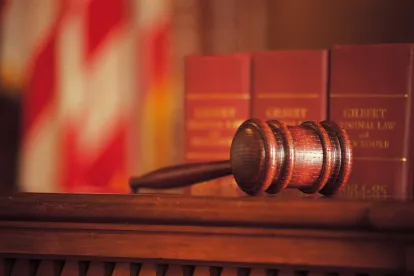Enzo Biochem Inc. v. Applera Corp.
Giving little deference to the district court’s factual findings, the U.S. Court of Appeals for the Federal Circuit reversed a district court’s claim construction in a long-running dispute relating to a patent for labeled and detectable nucleic acids. Enzo Biochem Inc. v. Applera Corp., Case No. 14-1321 (Fed. Cir., Mar. 16, 2015) (Prost, C.J.) (Newman, J., dissenting).
The claim at issue generally relates to nucleic acids having a certain structure, including chemical group A, “wherein A comprises at least three carbon atoms and represents at least one component of a signaling moiety capable of producing a detectable signal.” The district court construed this phrase such that “A” can form a detectable signaling moiety either all on its own, without being attached to any additional, separate components (“direct detection”), or by attachment of “A” to a separate, detectable moiety to form the claimed signaling moiety (“indirect detection”). On appeal, the Federal Circuit limited the construction of this phrase to cover only indirect detection.
The Federal Circuit explained that the plain meaning of the term “component” necessarily implies that the claimed signaling moiety must contain multiple parts, “as the term ‘component’ in and of itself indicates a multipart system.” The Federal Circuit reasoned that allowing the signaling moiety to contain only moiety “A” would read the word “component” out of the claim. Moreover, according to the Federal Circuit, because the claims also require that “A” be attached via a linker that “does not substantially interfere with formation of the signaling moiety,” allowing the signaling moiety to contain only moiety “A” would read the word “formation” out of the claim.
The Federal Circuit also rejected the district court’s claim differentiation argument – that the independent claim must encompass bothindirect and direct detection because certain dependencies specified only direct detection. In doing so, the Federal Circuit explained that claim differentiation cannot be used to broaden an independent claim beyond its proper scope, which in this case, was limited to indirect detection based on the plain meaning of the claim.
Finally, the Federal Circuit noted that the specification consistently describes “A” as being a multipart system, and the only discussion of direct detection in the specification that direct detection is inferior to indirect detection. Although the Federal Circuit acknowledged certain expert testimony showing that the specification actually did include one example of direct detection (a finding reviewed for clear error under the new Teva standard), the Federal Circuit concluded that “this sole factual finding does not override our analysis of the totality of the specification, which clearly indicates that the purpose of this invention was directed toward indirect detection, not direct detection.”
In her dissent, Judge Newman identified additional factual findings by the district court (which were not addressed by the majority), including that Applera’s expert admitted on cross-examination that the specification discloses several compounds that allow for direct detection. According to Judge Newman, the majority did not identify any clear error with respect to any of the district court’s factual findings. Instead, they “simply rule[d]” that the grammar of the claims requires that the signaling moiety requires two components, and “ignor[ed] the testimony and the district court’s findings and the jury verdict based on the evidence at trial.”
Practice Note: Even in cases where the Federal Circuit applies a “clear error” standard to a district court’s factual findings based on extrinsic evidence, the intrinsic evidence may outweigh the extrinsic evidence, regardless of the correctness of those factual findings.



 />i
/>i

